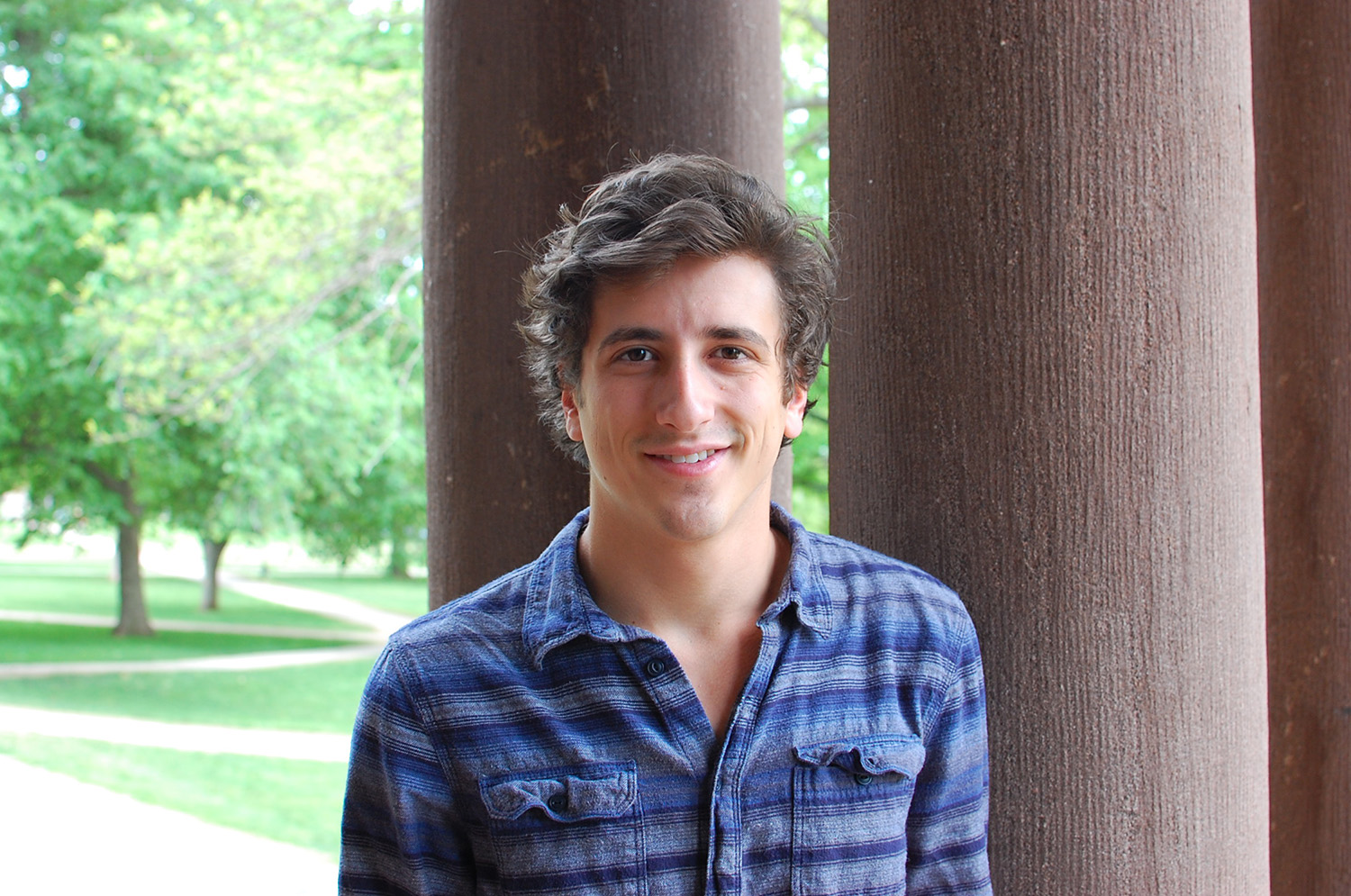Koplin-Green ’15 Studied Alpha Neurofeedback to Treat Anxiety


#THISISWHY
In this issue of News @ Wesleyan, we speak with Matan Koplin-Green from the Class of 2015.
Q: Matan, what is your major and what was the title of your thesis?
A: I’m a neuroscience and behavior major. I wrote my thesis on “Application of Alpha Neurofeedback in the Treatment of Anxiety Disorders.”
Q: Let’s back up. How did your interest in neuroscience and behavior develop?
A: I came to Wesleyan not knowing exactly what I wanted to study. I was interested in cognitive psychology and philosophy of mind, but also had a lifelong love of music. I took a year off between high school and college to play in a band in my hometown of Milwaukee, Wis., and read a lot about cognitive psychology. Once at Wesleyan, I took classes ranging from computer science to experimental music, but I was also very interested in being part of the fast-growing neuroscience major. Then in 2013, Psyche Loui (assistant professor of psychology, assistant professor of neuroscience and behavior) came to Wesleyan. I took her intro class and discovered that she teaches at the intersection of all my interests—neuroscience, technology and music. I decided I had to get involved. I applied to be in her lab, and was accepted.
Q: And how did you come to study EEG feedback as a treatment for anxiety?
A: Professor Loui was doing research on sonifying EEG, which means converting electrical activity in the brain into sound. Then I started reading about neurofeedback, which is a relatively new therapy being used to treat many different disorders, such as ADHD, epilepsy, traumatic brain injury and depression. It’s been shown to be very effective at treating some of these disorders—even more so than pharmacological treatments—but its use in anxiety hasn’t been researched very much.
Q: Please tell us about the research you conducted for your thesis.
A: We worked with Wesleyan students, mainly from the intro psych class—not specifically people with anxiety. They were not told what we were investigating. We gave our subjects real-time access to their own brain activity by converting the activity into sound. (Other neurofeedback methods convert brain activity into a moving image). The frequency of a tone that played was different depending on the level of alpha activity—which is associated with wakeful relaxation—in a subject’s brain. We asked the subjects to try to lower the tone, which would in turn increase their level of relaxation.
Q: How did you analyze the results, and what did you find?
A: We analyzed both the EEG activity, as well as self-reported anxiety scores. While we unfortunately did not have any statistically significant results, mainly due to small sample size, we did see some interesting trends. Our subjects used a variety of strategies to change their EEG activity and lower the pitch of the tone. Compared to a control group—people who received fake neurofeedback—we saw changes in alpha activity in those who received real neurofeedback. Different areas of the brain also showed differences in the change in alpha activity.
This was the first neurofeedback study conducted in Professor Loui’s lab, so a lot of it was getting used to the process. There are many things we could change in future studies. It would also be interesting to work with a specific population of people suffering from anxiety disorders, because neurofeedback has been shown to be more effective in those suffering from psychological conditions as compared to the general population.
Q: Is Professor Loui planning any future research in this area?
A: Professor Loui is interested in how converting EEG to music can help epilepsy patients, either through neurofeedback or simply as a device to monitor brain activity.
Q: And what are your post-graduation plans?
A: I have a job at a company out of Madison, Wis. called Epic, which works on electronic health records. It’s another cool intersection of my interests in psychology and health care. Longer term, I’m still deciding whether to pursue medical school or graduate school in neuroscience.

